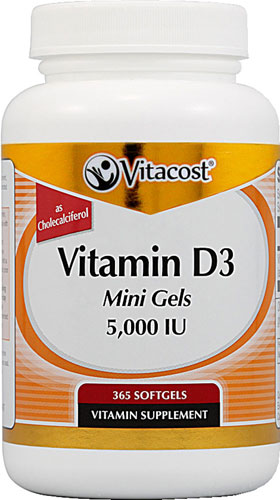Call me crazy, but I’m tempted to respond to a doctor’s closed-ended questions in ways that would knock his socks off. When he asks me about alcohol, for instance, he frames it something like this “you don’t drink much, right?” Or perhaps to assess risk of STDs he suggests “just one partner—you’re married, right?” Well, yes, he’s right, but would I ever say anything other than what he’s led me to believe is the only acceptable answer possible?
 |
| Isn't it time to get the support you need? |
This brings me to the important topic of educating your healthcare team, your doctor, in particular, about how to truly support you. In honor of National Eating Disorder Awareness Week (NEDAW) (here in the States) I thought that health care providers could use a bit of awareness, to hopefully make your visits, and your life, a bit less stressful. Please consider adding your own two cents to the comments—then pass it on to others—and your providers! While this is prompted by NEDAW, I’ve included recommendations that are worth sharing regardless of whether you struggle with an eating disorder, disordered eating, or simply are outside of what the BMI chart says you should be.
Unsolicited Advice From One Healthcare Provider To Another
On weighing your patient
Please weigh patients with their back to the scale. Have them remove all layers possible—most individuals, regardless of their weight, want the weight to reflect what’s real. Weighing with shoes, heavy belts, and jackets doesn’t contribute much valid information. Oh, and have them empty their pockets!
That said, some do want to misrepresent their weight—so less is always better—with regards to clothing. And have them empty their bladder first!
A poker face and restraint from commenting is wise. That is until you’ve gotten to assess their weight in context. Imagine if you said to an overweight patient—“great, you’ve dropped a ton of weight” only to realize that they had a rapidly growing cancer?
Weight change must be evaluated relative to behavior. Someone who lost weight (regardless of how appropriate you thought it was for them to drop some pounds) may very well have gone about it the wrong way.
Consider this—they may have been starving themselves, resulting in messing up their periods, their metabolic rate, their mood, their sleep, their thoughts, their relationships. This is nothing to offer positive reinforcement for. There is nothing healthy about losing weight this way. Perhaps they are compulsively exercising, or dehydrated from purging or laxative abuse. No, weight would not be a good measure of health then.
Similarly, your patient with a high BMI might have simply maintained her weight. But she feels well, is active and fit, and is healthy by all measures. Maybe she has even turned things around, if her weight had previously been climbing. Sure, you can explore other risk factors, such as quality of her diet—as I hope you would do with your slim patients, too. But if all looks good, perhaps you can accept that her stable weight is just fine for her.
Perhaps if she’s been climbing in weight that might warrant some probing about recent lifestyle changes—stressors, activity, diet—to help with better self care and disease prevention.
And if your underweight anorexic patient has increased his weight, please similarly temper your response! While you may be delighted, he (or she) may not be. It’s a mixed bag, gaining weight, even for those who are trying to gain weight. There’s the healthy side of them that really wants to recover. And then there’s the eating disorder voice that sees weight gain as a failure, as a “you can’t do anything right”, pulling them back to restricting again. It’s more valuable to elicit a sense of what they are thinking and feeling about the change. How does it fit with what they expected? What are the benefits of the changes they’re making? Focusing on the behaviors that contributed to the weight shift is more valuable than discussing the weight itself.
If your patient isn’t doing well, rest assured that they are as frustrated—even more so, really—than you are. The impact is far greater on them than on you, that’s for certain.
Hooray! You got your period back!
 It’s not healthy to lose one’s period due to such factors as anorexia, restrictive eating, or compulsive exercising. We all know that. But while getting a period back is a good sign, it is not always well-received by patients. For some, getting a period equals “I must be fat now”. For others, it means they are done with their efforts to change their eating and behaviors. And that may be the worse thing for them to conclude.
It’s not healthy to lose one’s period due to such factors as anorexia, restrictive eating, or compulsive exercising. We all know that. But while getting a period back is a good sign, it is not always well-received by patients. For some, getting a period equals “I must be fat now”. For others, it means they are done with their efforts to change their eating and behaviors. And that may be the worse thing for them to conclude.
Periods may return before weight is restored and before behaviors are normalized. Or they may come back after 4-6 months after stabilizing in a healthy range. Or they may never have disappeared, as was the case of a patient of mine who conceived 5 children through her years living with anorexia. The point? Consider where your patient is at before you rejoice in their body’s normalizing their periods!
Don’t Ask, Don’t Tell? I Don’t Think So.
If you don’t ask the right questions, you won’t get the real answers. So do ask open- ended questions—different than what my MD thought to ask—to obtain valuable information. If you’re discussing weight or body dissatisfaction, do ask if they’ve used laxatives, or diet pills, or vomiting or restricting—in the past, or currently. Suggest a frequency, in a non-judgmental way. If a patient says she purges daily, follow with a question like “how many times per day?” And when he says twice, follow with “And what’s the maximum?” Just like if they say they have a couple of drinks, follow with what’s a couple—4? 5? 2? Per day? Per week? Suggest a range of possibilities, without raising an eyebrow.

We can only help our patients if we can accurately assess their situation. And, we can’t begin to do so if they feel they can’t trust us. So do your part. Ask your questions in open-ended ways, and be careful how you react. Ask how you can help, what they need from you. Are they connected with appropriate resources, or do they need guidance?
Encourage a follow-up sometime soon!
Suggesting a 3 or 6-month follow-up visit certainly sends the message that their situation simply isn’t worth your taking too seriously. And as a result, they will undoubtedly convince themselves that really everything is fine, that nothing really needs to change.
And if you don’t believe me, read the comments from those in the know, below.
Thanks for taking the time to read this.
 I haven't the foggiest idea! I found the image using Google Image search and it's called blurry-1.jpg.
I haven't the foggiest idea! I found the image using Google Image search and it's called blurry-1.jpg.




































